
The "Beautiful Fountain" or "Beautiful Fountain" (Schöner Brunnen) is the most famous fountain in Nuremberg, which is included in the list of the main attractions of Nuremberg.
A beautiful fountain is located in the center of Nuremberg, on the edge of The Market square (Hauptmarkt), next to the Frauenkirche Church (Frauenkirche) and the Nuremberg Town Hall (Nürnberger Rathaus).


Initially, the Beautiful fountain was built of sandstone, by a bricklayer and architect from Nuremberg - Heinrich Boeheim, between 1385 and 1396 and had its own water supply. According to other sources, the fountain was built by the brothers Georg and Fritz Ruprecht together with Sebald Schonhofer.
According to the plan, the purpose of the fountain was to display the worldview of the statehood of the Holy Roman Empire and the theocentric worldview of the Middle Ages.
Throughout history, the fountain has been restored and rebuilt several times.
Today, on the main market square of the city, you can see a colorfully painted replica of the seashell fountain - 1903, a stepped platform was also erected around the fountain at that time. The surviving remains of the original fountain are in The German National Museum in Nuremberg (Germanisches Nationalmuseum).
During the Second World War, for safety, the fountain was filled with concrete and thus remained intact during the bombing of the city.
In 2016, the beautiful fountain was completely renovated and since then has external and internal LED lighting.
View of the Beautiful fountain and towers of the Church of St. Sebald (Sebalduskirche) - from behind
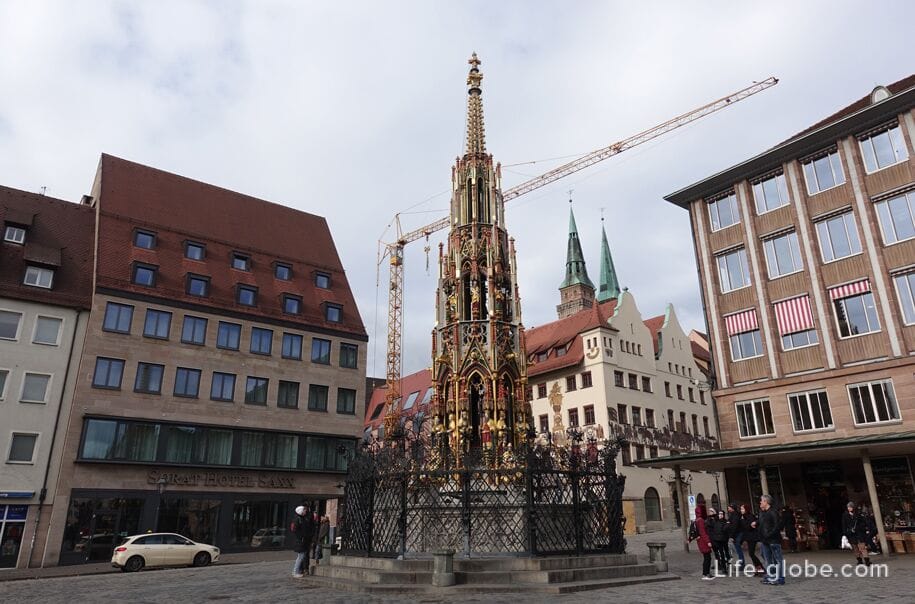
The beautiful fountain has a height of about 19 meters and the shape of a Gothic church spire (pyramidal shape, tapering to the top), decorated with branches.
The fountain consists of four tiers, which are decorated with gilding and 40 colorful figures (statues), personifying and representing: scientists (Aristotle, Nicomachus, Pythagoras, Ptolemy, Socrates, Euclid, Elias Donatus), as a symbol of philosophy and the seven sciences; four evangelists and four church fathers; seven electors and nine good heroes of different times; Moses and seven prophets. Gargoyles in the lower part of the fountain symbolize the seven deadly sins, and are also designed to protect the city from dishonesty.
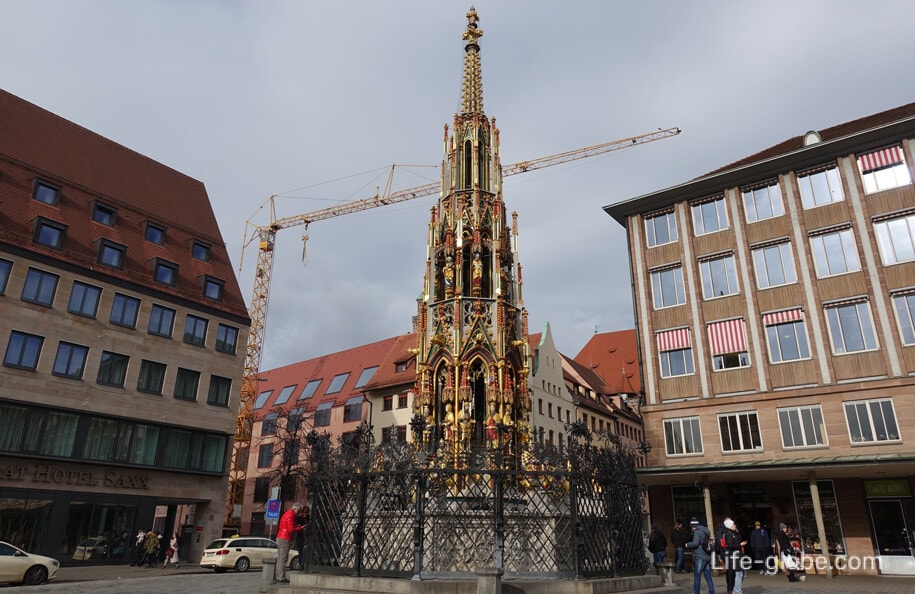
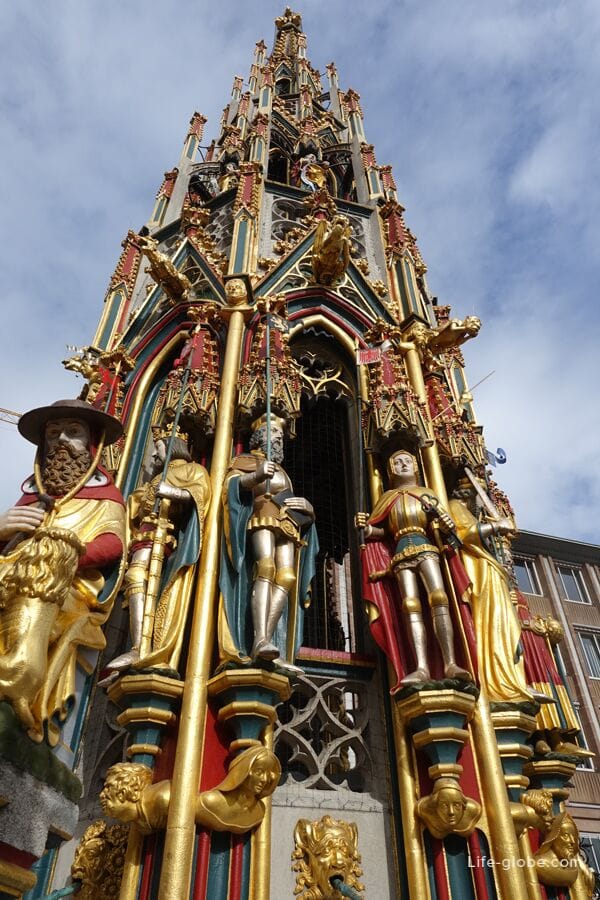
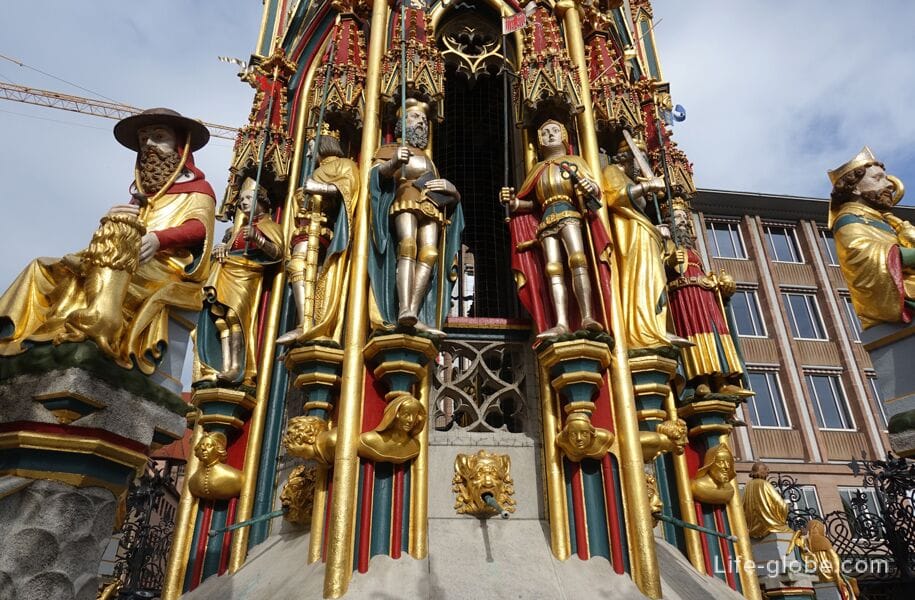
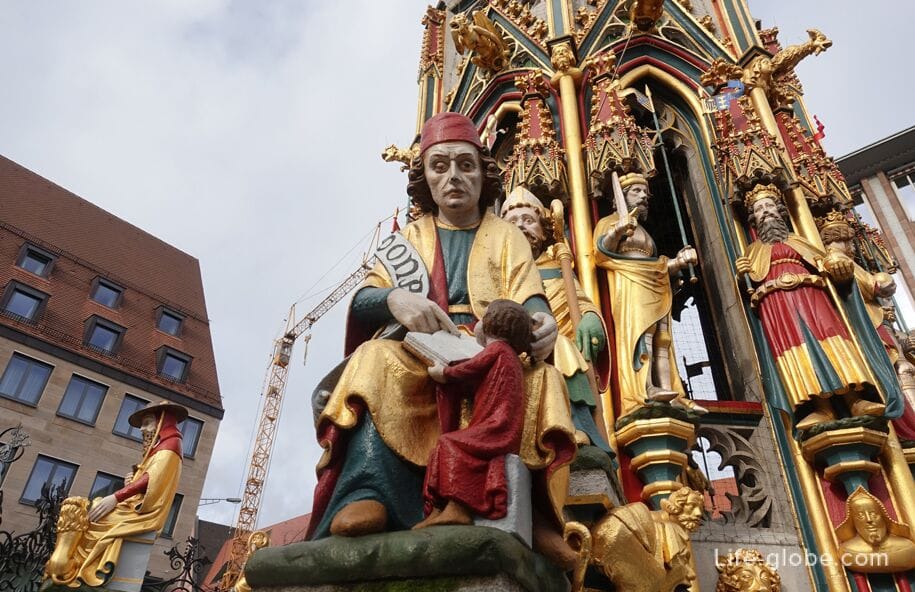
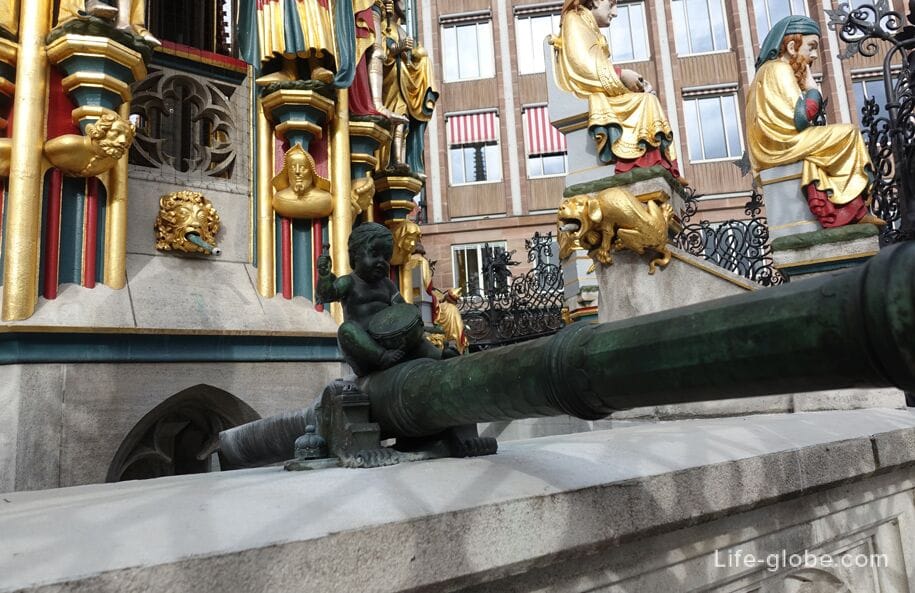

A sign on the fountain

1. Initially, the structure itself, which is a fountain, was supposed to become the spire of the Frauenkirche. But the technique of those times did not allow lifting a heavy structure to the top of the church building.
2. There is a rotating brass ring on the grating of the fountain, which attracts tourists the most.
Legend has it that if you turn the "golden" ring of a beautiful fountain once, then three wishes will come true, and if you turn it three times, you can expect many children.
The ring on the lattice, together with other rings and the lattice itself, belong to the work of Paulus Kuhn. During the history of the brass ring was updated at least 5 times (1824, 1903, 1949, 1950 and 1957), and the second - iron, located on the northeast side of the fountain grille - was added in 1902 and has remained older since then. The other rings in the fountain grating that cannot be rotated also belong to Kun and are original.
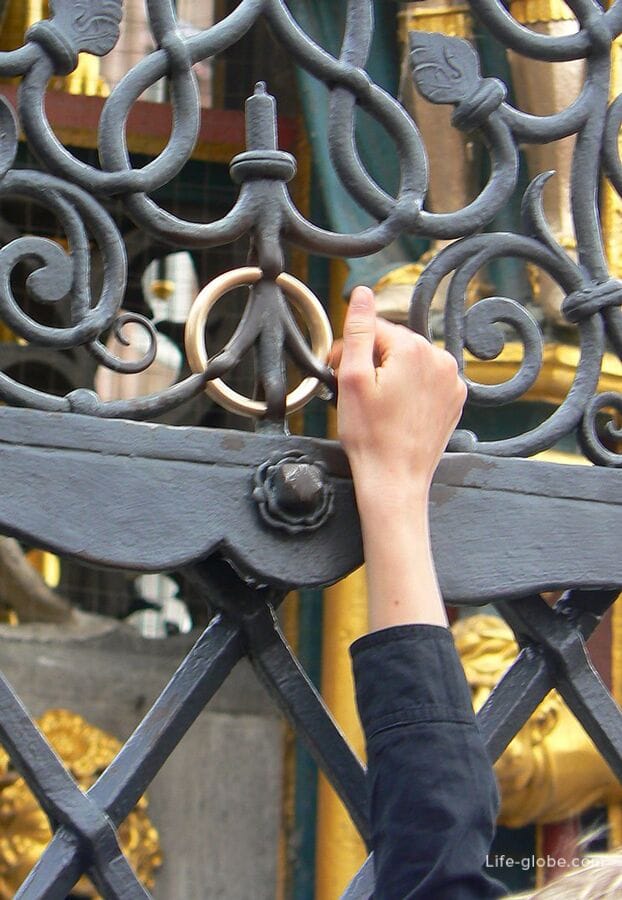
All accommodation facilities in Nuremberg, including in the city center and near the Beautiful Fountain, can be viewed and booked here